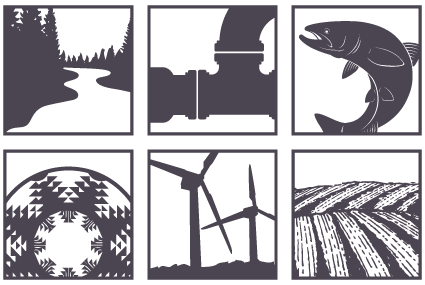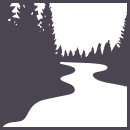Other Funding Opportunities
SEARCHABLE & BROWSABLE WEB PAGES: GRANTS & OTHER FUNDING OPPORTUNITIES
Updated April 2025
California Natural Resources Agency.
California Natural Resources Agency grant resources. https://resources.ca.gov/grants/grant-program-resources
California Grants Portal.
This site is managed and hosted by the CA State Library to provide a centralized location to find state grant opportunities. https://www.grants.ca.gov/
Grants.Gov.
This is a searchable database containing federal funding opportunities. https://www.grants.gov/search-grants
California Financing Coordinating Committee.
The California Financing Coordinating Committee (CFCC) combines the resources of four State and two Federal funding agencies to provide a one-stop shop for available grants, loans and bond financing for infrastructure projects. Since 1998, the CFCC has conducted free funding fairs statewide each year to educate the public and offer potential customers the opportunity to meet with financial representatives from each agency and learn more about their currently available funding programs.
Air Resources Board Funding Wizard.
The Funding Wizard is a searchable database of grants, rebates and incentives available in California — gathered all in one place —to help you pay for sustainable projects. The Funding Wizard team combs the internet for funding opportunities in categories such as energy, air quality, climate change, transportation, urban development, waste management, and water. https://fundingwizard.arb.ca.gov/web/node/2814
CAL FIRE Grant Program.
CAL FIRE offers several grant opportunities, each with its own scope and funding priorities. https://www.fire.ca.gov/grants/
Cal OES Grant Search Web Page.
This web page provides information regarding FEMA’s Hazard Mitigation Assistance grant programs and has other grant-related information available. https://www.caloes.ca.gov/cal-oes-divisions/grants-management
CDFW Grant Opportunities.
California Department of Fish and Wildlife grant programs fund projects that sustain, restore and enhance California’s fish, wildlife, plants and their habitats. https://wildlife.ca.gov/Grants
Funding Navigation for California Communities.
Funding Navigation for California Communities offers the most prominent funding opportunities for local governments and communities. These resources are available to communities across California and are categorized into eight “Project Types.”
https://www.fundingresource.org/
Sierra Nevada Conservancy Upcoming Grants web page.
Opportunities relevant to the Sierra Nevada region and throughout California are presented in a sorted list with grants due soonest on top. The list includes opportunities for Tribal nations. https://sierranevada.ca.gov/funding/funding-opportunities-newsletter/
Tribal Funding Registry.
A searchable grants database for Tribes and Native-led Nonprofits. https://www.tribalfunding.org/signup
US Army Corps of Engineers’ Continuing Authorities Program.
A group of nine water resource related authorities contained in several different laws. The purpose of the CAP is to plan, design, and construct water resources projects of limited scope and complexity. Project types include stream bank and shoreline protection, navigation improvements (dredging, widening turning basins), erosion mitigation, sediment management, flooding protection, and aquatic ecosystem restoration.CAP projects do not require project-specific authorization from Congress. https://www.nao.usace.army.mil/Missions/Civil-Works/Continuing-Authorities-Program/
US EPA Specific Grants Program.
Provides information about opportunities available through US EPA. https://www.epa.gov/grants/specific-epa-grant-programs
USDA National Institute of Food and Agriculture.
This searchable website allows the user to filter by program, eligibility, and topic. https://www.nifa.usda.gov/grants/funding-opportunities
USDA Rural Development.
This page lists current and past Notices of Solicitation of Applications and Notices of Funding Availability. https://www.rd.usda.gov/newsroom/notices-solicitation-applications-nosas
SPECIAL NEEDS FUNDING OPPORTUNITIES – OPEN UNTIL FUNDING RUNS OUT
Clean Drinking Water Well Assessment Grant Program.
The Rural Community Assistance Corporation is offering free well assessments and water quality screening for nitrate to private well owners https://www.rcac.org/wp-content/uploads/2024/03/FY24-Individual-Well-Assessment-Flyer.pdf
Preventing Outages and Enhancing the Resilience of the Electric Grid Grants.
The Preventing Outages and Enhancing the Resilience of the Electric Grid Grants program is split between $2.5 billion in matching grants for industry, also known as the Grid Resilience Utility and Industry Grants, and $2.3 billion in formula grants for States and Tribes, also known as the Grid Resilience State and Tribal Formula Grant Program. https://www.energy.gov/gdo/preventing-outages-and-enhancing-resilience-electric-grid-grants
Rural Community Assistance Corporation Community Facility Loans.
This program offers short-term loans for early property acquisition and predevelopment, interim construction costs and long-term permanent financing. Applicable facilities include public and nonprofit office buildings, treatment centers, emergency and transitional housing, assisted living, human services, public safety, child care, education and cultural facilities. Link active as of 8/16/24. https://www.rcac.org/lending-2/community-facility-loans/
Safe and Affordable Funding for Equity and Resilience Small Community Funding.
Small Community Funding is available to help small disadvantage communities (small DACs), providing drinking water service to less than 10,000 people or wastewater service to less than 20,000 people and having a median household income (MHI) of less than 80% the statewide MHI, with technical assistance needs, interim water supplies, and implement eligible drinking water or wastewater capital improvement projects. The Small Community Funding Program continuously accepts applications starting with a simple pre-application. Website last updated 2/17/22. https://www.waterboards.ca.gov/water_issues/programs/grants_loans/sustainable_water_solutions/scfp.html
Emergency Community Water Assistance Grants.
This program helps eligible communities prepare, or recover from, an emergency that threatens the availability of safe, reliable drinking water for rural communities with populations of 10,000 or less. https://www.rd.usda.gov/programs-services/water-environmental-programs/emergency-community-water-assistance-grants
Emergency Watershed Protection Program.
The EWP Program offers technical and financial assistance to help local communities relieve imminent threats to life and property caused by floods, fires, windstorms and other natural disasters that impair a watershed. EWP does not require a disaster declaration by federal or state government officials for program assistance to begin. https://www.nrcs.usda.gov/programs-initiatives/ewp-emergency-watershed-protection
TECHNICAL ASSISTANCE
Climate Change Technical Assistance Program for Tribes.
The Caring for Our Relatives Technical Assistance Program offers free, ongoing technical assistance for Tribes who may be facing barriers to starting or completing climate change-related species and/or ecological resilience projects that help our non-human relatives to survive and thrive in a changing climate. Types of projects supported include: grant writing, project proposal support, project scoping, support in implementing species/ecological resilience projects, and engaging with Tribal Leadership. https://www.cakex.org/community/opportunities/climate-change-technical-assistance-program-tribes-institute-tribal-environmental-professionals
EPA Office of Ground Water and Drinking Water Online Training System.
The online training system is a self-paced training system that provides an overview of the National Primary Drinking Water Regulations and is available to anyone interested in learning about drinking water regulations. The online training system can be found at: https://cfpub.epa.gov/epa_dwts/dsp_welcome.cfm
Grants Learning Center.
The Grants Learning Center is your gateway to the federal grants world. This page contains basic information about federal grants, including a community blog, an “Introduction to Grants.gov Video Series,” Community Questions, using the search function, and other basic and detailed information to help understand, evaluate, and apply for federal grants. https://www.grants.gov/learn-grants
ICARP List of Organizations Offering Pro-Bono Technical Assistance.
The Integrated Climate Adaptation and Resiliency Program (ICARP) Climate Services team has compiled a list of organizations that offer pro-bono technical assistance including grant writing. https://files.constantcontact.com/3ca30c7f501/f989159b-5086-4201-9dc3-772bd4ecf62a.pdf?_gl=1*orem1*_gcl_au*NDYzNjQ3OTM5LjE3MTYyMzc4ODY.*_ga*ZGRmZWVkOTEtZDY1ZC00NjRmLTlmMGUtODZjMTliZDQ4Mjlh*_ga_14T5LGLSQ3*MTcxOTI2ODU3Ni45LjEuMTcxOTI3MjE5NC40OC4wLjA
Institute for Tribal Environmental Professionals Online Training Opportunities.
These online courses contain assignments, quizzes, videos, examples, downloadable spreadsheets, and other resources. While they are self-paced, each course provides the opportunity for individual interaction with subject matter experts. Online courses currently available through the Institute for Tribal Environmental Professionals include:
Air Quality Planning for Wildland Smoke
After a Wildfire: Health and Safety Considerations
Emissions Inventory Fundamentals / Advanced
Intro to Air Quality in Tribal Communities Radon Fundamentals
Managing Road Dust in Tribal Communities
PPE for Tribal Environmental Professionals
Residential Building Science Review
Tribal Data Toolbox Version 3.1
Writing Quality Assurance Project Plans
http://www.nau.edu/itep/elearning
National Renewable Energy Lab Decision Support for Tribes.
NREL’s State, Local, and Tribal program partners with federally recognized Tribes, the U.S. Department of Energy (DOE), and other organizations to provide Energy Decision Support, which connects Tribes with credible, timely, and actionable scientific information on which to base their energy decisions NREL provides the following tailored programs: technology and market analytics, direct technical assistance, capacity building, and resilience assessment and planning. For more information, visit the technical assistance description.
On-Request Technical Assistance from DOE Office of Indian Energy.
The DOE Office of Indian Energy provides federally recognized Indian Tribes with technical assistance to advance Tribal energy projects at no cost. Technical support energy planning, housing and building energy efficiency, project development, policy and regulation, resilience, and village power. https://www.energy.gov/indianenergy/technical-assistance
Partners for Fish and Wildlife.
The Partners for Fish and Wildlife Program provides free technical and financial assistance to landowners, managers, tribes, corporations, schools and nonprofits interested in improving wildlife habitat on their land. https://www.fws.gov/program/partners-fish-and-wildlife
Special Evaluation Assistance for Rural Communities and Households in CA (Water and Waste Disposal Projects).
This program helps very small, financially distressed rural communities with predevelopment feasibility studies, design and technical assistance on proposed water and waste disposal projects. https://www.rd.usda.gov/programs-services/water-environmental-programs/search-special-evaluation-assistance-rural-communities-and-households-grant/ca
US DOE Clean Cities Coalition Network Technical Assistance.
Clean Cities connects transportation stakeholders with objective information and experts to assist with alternative fuels, fuel economy improvements, and emerging transportation technologies. For more information, visit the technical assistance description.
ROLLING FUNDING OPPORTUNITIES
Coastal Conservancy Grants.
Most Conservancy grants are awarded through a rolling pre-application solicitation. This includes Climate Ready, Wildfire Resilience, and all regional grant programs. https://scc.ca.gov/grants/
Community Planning Assistance for Wildfire.
Any incorporated community in the U.S. can apply, including towns, cities, counties or tribes. Eligible applicants must demonstrate high wildfire risk, strong stakeholder engagement at the community level, a collaborative relationship between the land use planning and fire department, and opportunities for land use planning to benefit community wildfire risk reduction efforts. https://cpaw.headwaterseconomics.org/
Indian Land Tenure Foundation.
ILTF makes grants to Indian nations and nonprofit organizations for land-related initiatives in education, cultural awareness, economic opportunity and legal reform. We work to promote education on Indian land ownership and management, increase cultural awareness of Indian land tenure, create economic opportunity on Indian-owned lands, and reform the legal and administrative systems that prevent Indian people and Native nations from owning and controlling their lands. https://iltf.org/grants/
Seventh Generation Fund.
Seventh Generation Fund focuses on cultural revitalization, leadership development, tribal sovereignty, and culturally appropriate economic development. The primary purpose of our work is dedicated to Indigenous Peoples’ self-determination and the sovereignty of Native nations. https://7genfund.org/our-work/
USDA NRCS Watershed and Flood Prevention Operations (WFPO) Program.
The Watershed Protection and Flood Prevention (WFPO) Program helps units of federal, state, local and federally recognized tribal governments (project sponsors) protect and restore watersheds. https://www.nrcs.usda.gov/programs-initiatives/watershed-and-flood-prevention-operations-wfpo-program


